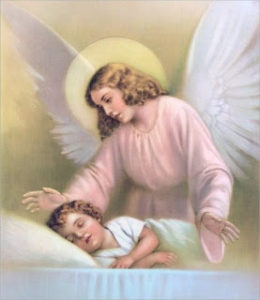
by Karen | Nov 29, 2016 | Karen's Korner
As I was decorating the church the other day, Andy William’s Christmas classic, It’s the Most Wonderful Time of the Year, echoed through the sanctuary. Andy sang of good cheer, holiday greetings and gay happy meetings. But I knew that the season wouldn’t be happy for everyone.
It’s supposed to be a time when family and friends come to call, but how many people will be alone for the holiday? Maybe their job has taken them far from home. Maybe they are elderly and their family and friends have all passed on. Maybe their expectations or family conflicts have isolated them from others. For these people, there will be no parties for hosting, no marshmallows for toasting, nor caroling in the snow.
It is during happy times when we are often so caught up in our own merriment that we overlook those who need us most. We forget the real reason for the season, to share with others, to give of ourselves. It’s important to remember that not everyone is surrounded by large wonderful families. Some have problems during the holidays and some are overcome with great sadness when they remember loved ones who are not with them. Many people have no one to spend these times with and are besieged by loneliness.
We all need caring thoughts and loving prayers. Those who have family problems, health struggles, job issues, or worries of any kind just need to know that someone cares. No one should be alone this time of year. The greatest gift you can give is your love and compassion.
When I opened the Spiritual Path Church, one of the first programs I started was a candlelight Christmas Eve service. I wanted people to feel welcome and at home. I wanted to offer them a loving haven where they would not be isolated on Christmas Eve. I invited everyone to come sit in the power of the angels. As a Spiritualist, I wanted them to understand that we are never alone, that there are always loved ones and angels watching over us.
It is my wish that the when anyone sits in this little Spiritualist church, they are surrounded by the glorious and magnificent feelings of love and endearment that come from their love ones and the angels. I know when I sit here on Christmas Eve, memories come back from days gone by. I am fortunate I have my congregation and family with which to share these wonderful feelings.
I see a lot of lonely and distressed people this time of year for a variety of reasons. It is my obligation, no, my pleasure, to assure people that their love ones are still around in spiritual form, and to help them with issues of closure. We must all be the light that helps others see. We must extend a warm and helping hand of compassion to a lost soul to bring their spirits back. By doing so, we also create a gift of healing for ourselves as well.
By giving love and compassion to others, we will make this the most wonderful time of the year.
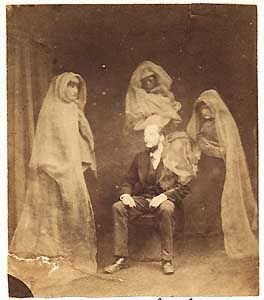
by Karen | Nov 15, 2016 | Karen's Korner
Thomas Slater was an optical instrument maker in London in the 1840s who, among other things, helped build telescopes. He also had an interest in spiritualism and held meetings at his house. Some of those meetings included Mr. Robert Owen and Lord Brougham. Mr. Owen remarked that when he died, he would return and appear in spirit photographs. After Owen’s death, Slater tried his hand at spirit photography and indeed produced a photo with the likeness of Mr. Owen.
Trying to prove to skeptics that spirit photographs were more than illusions produced during the developing process, he decided to study the phenomena. He wrote of his experiences producing photographs with Mr. Fredrick A. Hudson.
At first the two began with normal photography. “He took a negative of me, and it turned out to be a very good one, namely, a clear, sharp negative—nothing more,” Slater said. A second photograph was taken with an old plate that had been cleaned. Nothing appeared on that plate when it was developed. During the third attempt, Slater thought of his dead mother while the photograph was taken. “On the plate is a fine female figure, draped in white standing before me with her hand resting on my head,” Slater said. “The drapery nearly covers the whole of my body, leaving only the side of the head and one hand visible. I am certain Mr. Hudson played no tricks on this occasion.”
Skeptics suggested that the trickery might occur within the camera itself. To disprove that, Mr. Slater made “a new combination of lenses, and took a new camera and several glass plates” to Mr. Hudson’s studio. They focused the new camera on a sitter and produced a “fine spirit-picture.” This was repeated with another sitter, and with similar success.
Mr. Slater stated , “Collusion or trickery was altogether out of the question.”
, “Collusion or trickery was altogether out of the question.”
Mr. Slater carried on with a further experiment. He created a camera with dark lenses. “The color of the glass was such as only in the strongest light you can see the sitter at all.”
“And no one was more astonished than Mr. Hudson, after seeing me focus the instrument to a lady sitting in the chair, to find not only a sharp, well-defined negative with good half-tone, but also that standing by the lady was a fine spirit-figure, draped in black and white,” Mr. Slater said.
He asked skeptics to explain why they were able to take portraits of persons through instruments that excluded so much light that the sitter was scarcely visible. At the same time, the spirits were impressed vividly upon the photographic plates. He said, “I am now carrying on experiments upon this part of the spectrum, and am convinced that much may and will be discovered that is useful in photography by making use of invisible light.”
References:
A BRIEF HISTORY OF SPIRIT PHOTOGRAPHY, A Resume, in Three Parts, of the Efforts Made to Obtain Photographs of Departed Persons by Experimenters in Great Britain, the United States, and France. By J. J. MORSE
The History of Spiritualism, Vol. II, Chapter 5, by Sir Arthur Conan Doyle.
The Spiritualist, Nov 1, 1873. “Miracles and Modern Spiritualism,” 1901, p 198
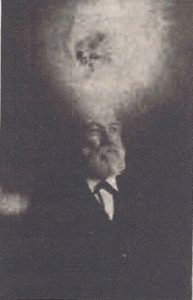
by Karen | Nov 8, 2016 | Karen's Korner
Veteran Spiritualist, Andrew Glendinning, was noted for his investigations into spirit photography. During the period from 1864 to 1908, he experimented in psychic-photography with a number of friends who were mediums. He recorded his experiences with and without the presence of a medium, and published his observations in a book entitled “The Veil Lifted.”
 Glendinning related his observations obtained with Mr. James N. Anderson in the presence of Mr. David Duguid, and occasionally with his assistant. They got several pictures, including a portrait of Mr. Anderson’s little boy, who had died two years previously. “There he was in the night gown which he had worn on his death-bed, and which had been buried with his lifeless body. Yes, there he was, but with this difference, that his pleasant eyes were now seen open, and instead of the pallor of death, a happy smile was on his face…”
Glendinning related his observations obtained with Mr. James N. Anderson in the presence of Mr. David Duguid, and occasionally with his assistant. They got several pictures, including a portrait of Mr. Anderson’s little boy, who had died two years previously. “There he was in the night gown which he had worn on his death-bed, and which had been buried with his lifeless body. Yes, there he was, but with this difference, that his pleasant eyes were now seen open, and instead of the pallor of death, a happy smile was on his face…”
In another instance, Mr. Glendinning relates the story of Mr. John Dewar. Mr. Dewar went to a Mr. Boursnell’s hoping to get a picture of his mother. He received instead a portrait of his deceased sister Jeannie who was recognized by relatives and friends. To prevent fraud, Mr. Dewar took his own photographic plates with him. Mr. Boursnell also invited Mr. Dewar to examine the camera, and invited both of them into the dark room to develop the plates. Glendinning said, “I was with them in the dark room during the process of development and fixing. Others have been privileged in the same way when Mr. Boursnell felt certain that they were honest and earnest.”
Glendinning also tried capturing spirits without using a camera. In 1892, he discovered a beautiful woman twice on his own plates during the absence of a medium. He noted that there were some differences between the two in the folds of the “spirit-drapery.” A few days later the same form, with a still different arrangement of drapery was captured on stereoscopic plates by Mr. James Robertson and Glendinning. On that occasion, the medium, Mr. David Duguid, was present.
“Opponents of Spiritualism amuse me by their explanations that I must have procured a statue of ‘Clytie,’ dressed it with muslin, and photographed it to represent a spirit form,” Glendinning said. He insists that was not the case.
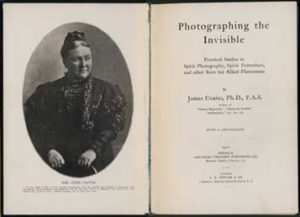 Another photograph obtained without the help of a medium, was that of a “foreign-looking” lady on the same plate as himself. He was visiting one of his married daughters, and had her help expose the plate. The development and fixing were done by Glendinning.
Another photograph obtained without the help of a medium, was that of a “foreign-looking” lady on the same plate as himself. He was visiting one of his married daughters, and had her help expose the plate. The development and fixing were done by Glendinning.
Glendinning also created a series of twenty-six prints without the use of a camera. These were called Dorchagraph’s, coined by Andrew Glendinning to distinguish them from “thought photography” later known as Skotographs. One of them was a portrait of a William Haxby. Another portrait was that of Bishop William, of Wykeham, known as the Architect Bishop. “This portrait I obtained several times,” Glendinning said. “both with and without the camera, and always exactly the same. This effectually proves that the duplication of the same form with different sitters which sometimes occurs is not by any means a proof of double printing, as has been frequently alleged.”
Reference: Photographing the Invisible: Practical Studies in Spirit Photography, Spirit Portraiture, and Other Rare but Allied Phenomena. James Coates, 1910.
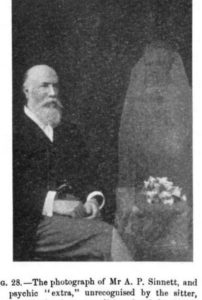
by Karen | Nov 1, 2016 | Karen's Korner
In 1909, there was an attempt to investigate spirit photography to determine if it was an actual happening or a fraud. A “Commission” was set up by the London “Daily Mail” to inquire into the facts of spirit-photography. It consisted of R. Child Bayley, F. J. Mortimer, and E. Sanger-Shepherd, A. P. Sinnett, E. R. Serocold Skeels, and Robert King. Their inquiry was not to conduct experiments, but to evaluate previously produced spirit photographs.
 The Commission invited the general public to send photographs produced under test conditions to “The Daily Mail.” Only a small number were submitted. In the end, the Commission decided that the photographs couldn’t be evaluated for the following reasons, quoted from their report:
The Commission invited the general public to send photographs produced under test conditions to “The Daily Mail.” Only a small number were submitted. In the end, the Commission decided that the photographs couldn’t be evaluated for the following reasons, quoted from their report:
I.―That none of the photographs submitted were shown to be taken under conditions which precluded fraud.
II.—That photographs submitted by Mr. Sinnett as taken in his own presence were clearly the result of “faking” and easily explainable on material grounds.
III.―Other photographs shown to us were taken under conditions of which we were told less; but in these we also saw no reason to suppose that anything out of the ordinary played any part. Some of them failed to show anything beyond defects due to careless manipulation, which were mistaken by their producers for supernatural results.
IV.—A large proportion of the photographs shown to us which lead any definite spirit-forms on them were produced by one photographer, who appears to be carrying on a business in the production of these things for a profit.
V.―According to invitation, packets of plates were sealed by us and submitted to Archdeacon Colley to receive “psychic writing” without being opened. This test, however, was not carried out, as Archdeacon Colley, after receipt of the plates, stated that “his discarnate friend having again recently made progress in the spheres may not from his higher degree yet for a while . . . be able to find the communicating link to transmit through one or more minds removed from this life the faculty or power requisite to impress the photo plate with psychic writing or spirit faces.”
VI.—A gentleman in Manchester offered to arrange a series of seances with a lady medium at which experiments might be conducted. On the first occasion he was unable to be present. On the second he attended, but informed the Commission that the lady was indisposed, and there was no prospect of the seances being held for a considerable time.
The Commission concluded that unless actual tests could be arranged, they couldn’t form an opinion about the photographs. A. P. Sinnett, E. R. Serocold Skeels, and Robert King wrote a column, “The Spiritualist Report” to accompany their decision. They blamed the Commission’s failure on the fact that some members “were unacquainted with the intricate science of which spirit-photography is a small part, that it was necessary for them to undertake some preliminary study of Spiritualism generally before they could even appreciate the evidence they might be called upon to deal with.” They stated that, “They have shown no inclination to prepare themselves in this way for the work they undertook, nor even to go unprepared in search of the great volume of evidence available. They have merely asked for experimental demonstrations, in ignorance of the conditions under which such demonstrations are possible.” They concluded that the “Commission has failed to secure proof that spirit-photography is possible, not because evidence to that effect is otherwise than very abundant, but by reason of the unfortunate and unpractical attitude adopted by those members of the Commission who had no previous experience of the subject.”
Even though, the Commission could not come to any conclusion about spirit photography, the conditions under which some photos were taken at the time were documented. The following testimony was given in a letter to Prof. Jas. Coates, of Rothesay, from Mr. John Auld.
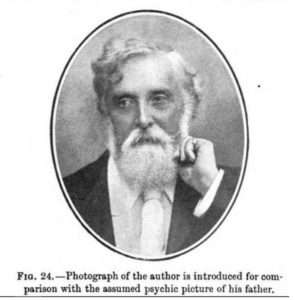 “In reply to your expressed wish that I should give you an account of how I obtained the psychic photographs in which you are so much interested, and as you propose to publish my statement, I will be brief.
“In reply to your expressed wish that I should give you an account of how I obtained the psychic photographs in which you are so much interested, and as you propose to publish my statement, I will be brief.
“In September, 1908, while visiting London, with the object of seeing the Franco- British Exhibition, I embraced the opportunity of calling upon Mr. Boursnell and got my photograph taken, in the hope that some psychic figures might come on the plate. Armed with an introduction given me by Mr. James Robertson, Hon. President of the Glasgow Association of Spiritualists, and with the knowledge that Mr. Boursnell had succeeded in getting many recognised spirit-photographs, I called upon him with some degree of confidence.
“On calling at the house Mr. Boursnell—an old man, who impressed me favourably―met me at the door and escorted me upstairs to a large room, apparently a dining-room, with two windows on one side facing the street. On handing Mr. Boursnell my letter of introduction I found that he had already given a sitting that day, and that he could not give another to do himself justice. It was arranged that I should call on the following day at noon.
“I was photographed in the room mentioned above. The day was fine and bright outside, and the room was flooded with daylight throughout the sitting. I make this statement definitely, because some critics thought the photos were taken by artificial light. Before taking my photograph he said there were three psychic forms present in my surroundings, a man (photo below is said to have faded) and two ladies. He also got the name of “Lizzie.”
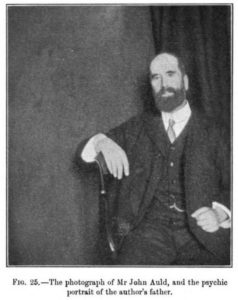 “In broad daylight he exposed two plates in succession withdrew the slide, and put in a fresh slide, and these were rapidly exposed. I asked him if he thought the figures seen would show on the plates. He told me that they would be there all right. I waited until the plates were developed, when he informed me that there was a spirit-form photographed on each. On receipt of the cabinets I found on two the face of a gentleman about 70 years of age; snow-white hair on head, silvery whiskers, moustache, and beard; expressive eyes, a countenance of much refinement, glowing with intelligence and advanced spirituality. On the other two plates were two ladies, one on each plate. None of the faces were known to me, though the gentleman and one of the ladies are considered by you like those of departed relatives. Mr. James Robertson, who has an extensive collection, and has seen some hundreds of similar photographs, says that they are new to him. Mr. Robertson has obtained through Mr. Boursnell photographs of departed friends under conditions beyond cavil. Mr. Wm. T. Stead and Mr. John Lobb, Editor of “The Christian Age” for over thirty years, have had speaking likenesses of departed friends, and from other sources of testimony, and from my own favourable impressions on seeing Mr. Boursnell, I did not think it necessary to have my photographs taken under test conditions. I trust if Mr. Boursnell is spared, and I have the opportunity of having some further sittings, I hope that I, too, will get a recognisable portrait of some departed friend.”
“In broad daylight he exposed two plates in succession withdrew the slide, and put in a fresh slide, and these were rapidly exposed. I asked him if he thought the figures seen would show on the plates. He told me that they would be there all right. I waited until the plates were developed, when he informed me that there was a spirit-form photographed on each. On receipt of the cabinets I found on two the face of a gentleman about 70 years of age; snow-white hair on head, silvery whiskers, moustache, and beard; expressive eyes, a countenance of much refinement, glowing with intelligence and advanced spirituality. On the other two plates were two ladies, one on each plate. None of the faces were known to me, though the gentleman and one of the ladies are considered by you like those of departed relatives. Mr. James Robertson, who has an extensive collection, and has seen some hundreds of similar photographs, says that they are new to him. Mr. Robertson has obtained through Mr. Boursnell photographs of departed friends under conditions beyond cavil. Mr. Wm. T. Stead and Mr. John Lobb, Editor of “The Christian Age” for over thirty years, have had speaking likenesses of departed friends, and from other sources of testimony, and from my own favourable impressions on seeing Mr. Boursnell, I did not think it necessary to have my photographs taken under test conditions. I trust if Mr. Boursnell is spared, and I have the opportunity of having some further sittings, I hope that I, too, will get a recognisable portrait of some departed friend.”
Reference: A BRIEF HISTORY OF SPIRIT PHOTOGRAPHY A Resume, in Three Parts, of the Efforts Made to Obtain Photographs of Departed Persons by Experimenters in Great Britain, the United States, and France. James Johnson Morse, taken from the Two Worlds Friday August 27th 1915


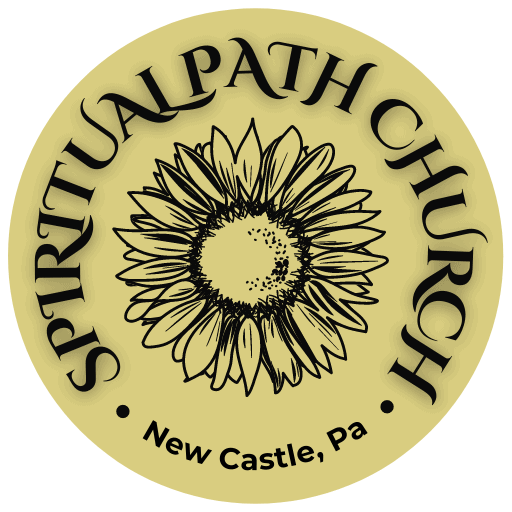


 Another photograph obtained without the help of a medium, was that of a “foreign-looking” lady on the same plate as himself. He was visiting one of his married daughters, and had her help expose the plate. The development and fixing were done by Glendinning.
Another photograph obtained without the help of a medium, was that of a “foreign-looking” lady on the same plate as himself. He was visiting one of his married daughters, and had her help expose the plate. The development and fixing were done by Glendinning.
 “In reply to your expressed wish that I should give you an account of how I obtained the psychic photographs in which you are so much interested, and as you propose to publish my statement, I will be brief.
“In reply to your expressed wish that I should give you an account of how I obtained the psychic photographs in which you are so much interested, and as you propose to publish my statement, I will be brief. “In broad daylight he exposed two plates in succession withdrew the slide, and put in a fresh slide, and these were rapidly exposed. I asked him if he thought the figures seen would show on the plates. He told me that they would be there all right. I waited until the plates were developed, when he informed me that there was a spirit-form photographed on each. On receipt of the cabinets I found on two the face of a gentleman about 70 years of age; snow-white hair on head, silvery whiskers, moustache, and beard; expressive eyes, a countenance of much refinement, glowing with intelligence and advanced spirituality. On the other two plates were two ladies, one on each plate. None of the faces were known to me, though the gentleman and one of the ladies are considered by you like those of departed relatives. Mr. James Robertson, who has an extensive collection, and has seen some hundreds of similar photographs, says that they are new to him. Mr. Robertson has obtained through Mr. Boursnell photographs of departed friends under conditions beyond cavil. Mr. Wm. T. Stead and Mr. John Lobb, Editor of “The Christian Age” for over thirty years, have had speaking likenesses of departed friends, and from other sources of testimony, and from my own favourable impressions on seeing Mr. Boursnell, I did not think it necessary to have my photographs taken under test conditions. I trust if Mr. Boursnell is spared, and I have the opportunity of having some further sittings, I hope that I, too, will get a recognisable portrait of some departed friend.”
“In broad daylight he exposed two plates in succession withdrew the slide, and put in a fresh slide, and these were rapidly exposed. I asked him if he thought the figures seen would show on the plates. He told me that they would be there all right. I waited until the plates were developed, when he informed me that there was a spirit-form photographed on each. On receipt of the cabinets I found on two the face of a gentleman about 70 years of age; snow-white hair on head, silvery whiskers, moustache, and beard; expressive eyes, a countenance of much refinement, glowing with intelligence and advanced spirituality. On the other two plates were two ladies, one on each plate. None of the faces were known to me, though the gentleman and one of the ladies are considered by you like those of departed relatives. Mr. James Robertson, who has an extensive collection, and has seen some hundreds of similar photographs, says that they are new to him. Mr. Robertson has obtained through Mr. Boursnell photographs of departed friends under conditions beyond cavil. Mr. Wm. T. Stead and Mr. John Lobb, Editor of “The Christian Age” for over thirty years, have had speaking likenesses of departed friends, and from other sources of testimony, and from my own favourable impressions on seeing Mr. Boursnell, I did not think it necessary to have my photographs taken under test conditions. I trust if Mr. Boursnell is spared, and I have the opportunity of having some further sittings, I hope that I, too, will get a recognisable portrait of some departed friend.”